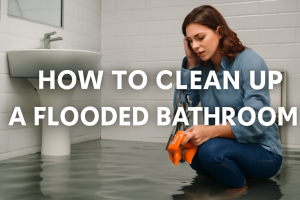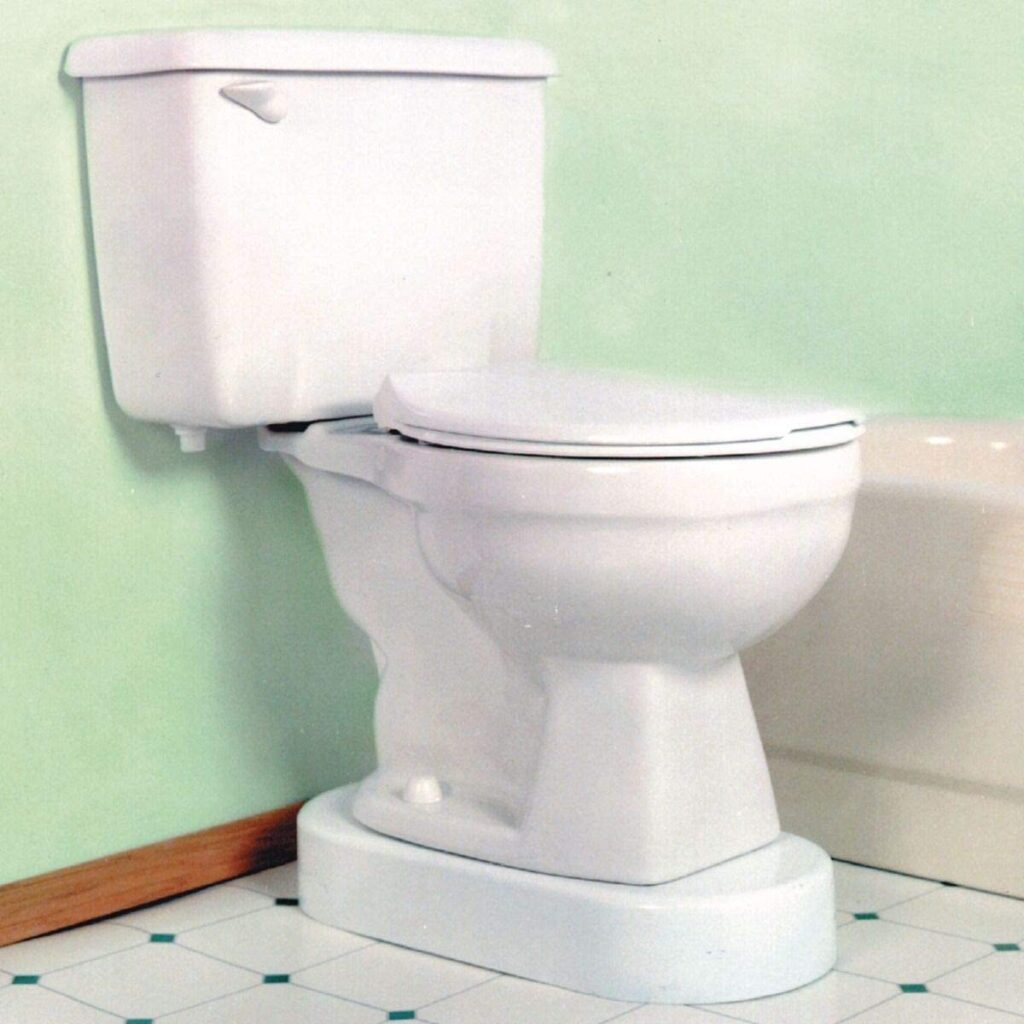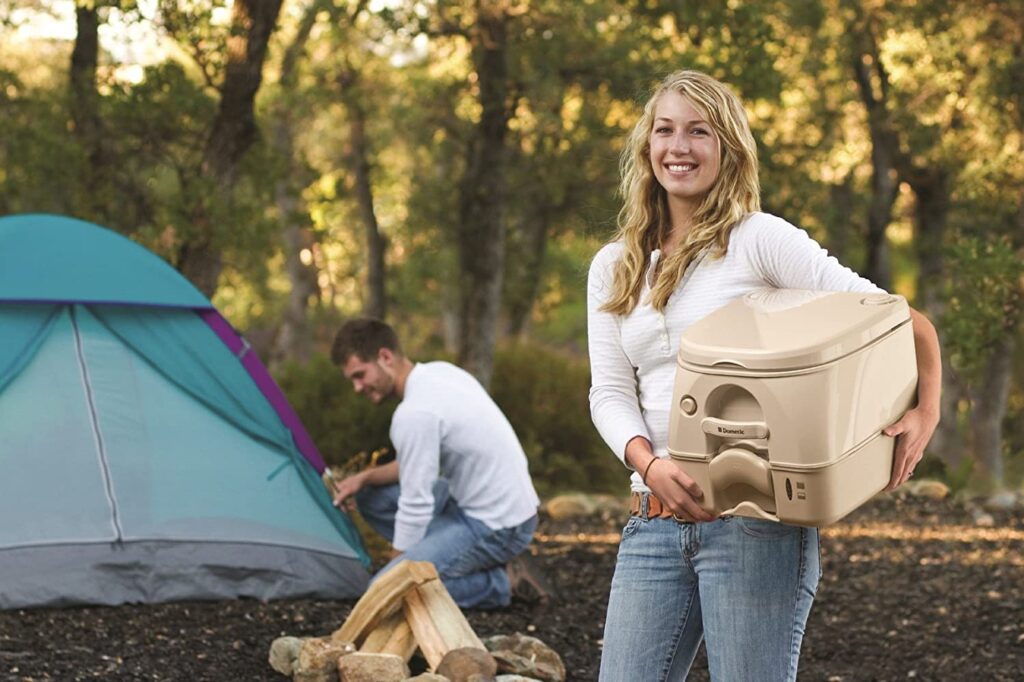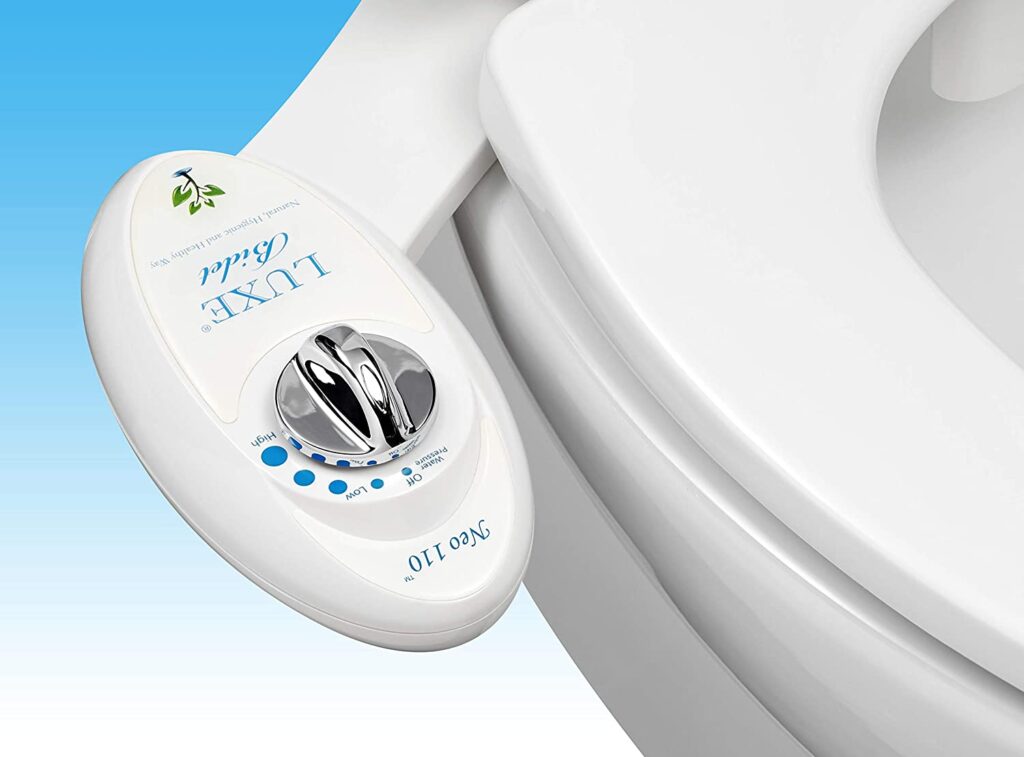 A flooded bathroom is more than just annoying—it can cause serious damage if you don’t deal with it quickly. Whether it’s from a burst pipe, a clogged drain, or an overflowing bathtub, bathroom floods are a problem many homeowners face. If you leave the water sitting for too long, it can damage your floors, walls, and fixtures for good. Plus, standing water is the perfect place for mold and mildew to grow, which can lead to health problems for you and your family.
A flooded bathroom is more than just annoying—it can cause serious damage if you don’t deal with it quickly. Whether it’s from a burst pipe, a clogged drain, or an overflowing bathtub, bathroom floods are a problem many homeowners face. If you leave the water sitting for too long, it can damage your floors, walls, and fixtures for good. Plus, standing water is the perfect place for mold and mildew to grow, which can lead to health problems for you and your family.
In this article, we’ll walk you through the steps to clean up a flooded bathroom, making sure you stay safe and prevent bigger issues. We’ll go over the precautions you should take, the best ways to dry things out, and tips on avoiding future floods. Whether it’s just a little water or a big mess, the following advice will help you take care of it quickly and safely.
Table of Contents
2. Understanding the Causes of Bathroom Flooding
Bathroom flooding happens more often than you might think, and understanding what causes it is key to both preventing it and cleaning it up.
Common Causes of Bathroom Flooding
Clogged Drains: Over time, things like hair, soap, and other debris can build up in your bathroom drains. This can cause slow drainage or even complete blockages. When the water can’t drain properly, it might overflow, especially if the water level in the sink or bathtub gets too high.
Burst Pipes: Plumbing issues, like frozen or old pipes, can crack or burst, leading to bathroom flooding. This is especially tricky when the problem happens behind the walls, where it’s hard to notice until there’s a lot of damage.
Overflows from Bathtubs or Sinks: One of the most common causes of flooding is simply forgetting about a running faucet or bathtub. If the water runs too long, it will overflow and flood the bathroom floor.
How Heavy Rains or Broken Plumbing Can Lead to Bathroom Floods
In areas where there’s heavy rain, your bathroom could flood because of a clogged or malfunctioning drainage system. Also, broken plumbing—whether from bad weather or lack of maintenance—can cause leaks and water buildup, which may lead to flooding.
Signs That Flooding Is Imminent or Already Starting
Bathroom flooding doesn’t always happen all at once—it can start slowly. Catching the signs early can help prevent more damage. Watch out for:
-
Slow drainage in sinks, bathtubs, or showers.
-
Water backing up in the drain when you run water.
-
Persistent musty smells, which means moisture is trapped somewhere.
-
Discoloration or water stains around plumbing fixtures or on the walls.
If you notice any of these signs, it’s important to act fast and deal with the problem before it turns into a big flood.
3. Safety First: Precautions Before You Start Cleaning
When you’re dealing with a flooded bathroom, your safety is the number one priority. Floodwater can bring a lot of risks, especially when it comes to electricity or contamination. Follow these steps to stay safe while cleaning up.
Turn Off the Water Supply to Prevent Further Flooding
The very first thing you should do when you notice a flood is stop the water from coming in. If you know where the water shut-off valve is, turn it off right away to stop the flooding. If you’re not sure where it is, check near your water meter or under the sink to find the valve and turn it off.
Shut Off the Electricity to the Bathroom to Avoid Electrical Hazards
Water and electricity don’t mix, so if there’s water near electrical outlets, switches, or appliances like a hairdryer or light, make sure to cut the power. You may need to flip the circuit breakers in your electrical panel to make sure everything’s turned off and there’s no risk of electrocution.
Use Protective Gear to Avoid Contamination
Floodwater can carry harmful things like bacteria, mold, and even sewage in some cases. To stay safe, always wear protective gear—like gloves, boots, and a mask—when cleaning up. Rubber gloves and boots will keep you safe from the dirty water, and a mask will help protect you from breathing in any harmful fumes or dust.
Make Sure There Are No Dangerous Electrical Appliances in Standing Water
Check to see if any electrical appliances, like hairdryers or lamps, are plugged in and submerged in the water. Don’t try to touch or unplug them until you’re sure the electricity is turned off. Water around electrical appliances is a big fire hazard, so it’s important to deal with it carefully and quickly.
4. Step-by-Step Process to Clean Up the Flooded Bathroom
Cleaning up a flooded bathroom can feel overwhelming, but breaking it into small steps makes it a lot easier. Here’s a simple guide to help you get your bathroom back to normal as quickly and safely as possible.
Step 1: Assess the Damage
Before you start cleaning, take a moment to figure out what you’re dealing with. Knowing how much water has flooded the bathroom and what areas are the most affected will help you focus your efforts.
-
Evaluate the Extent of Flooding: Check how far the water has spread. Is it just on the floor, or has it reached the walls? If water’s reached the walls, it’s a bigger problem because it can soak into the drywall and lead to mold if not handled quickly.
-
Check for Leaks or Broken Pipes: Try to figure out where the water is coming from. Is it a burst pipe, a clogged drain, or an overflow? If you can find the source, turn off the water supply to stop the flooding and keep the damage from getting worse. If you’re not sure or it’s a plumbing problem, it’s best to call a plumber.
Step 2: Remove Standing Water
Once you’ve assessed the damage, it’s time to get rid of the water. The longer it sits, the more damage it can cause to floors, cabinets, and other materials.
-
Use a Wet/Dry Vacuum or Mop: A wet/dry vacuum is the best tool for removing water quickly. Start by vacuuming up as much water as you can. If you don’t have one, a mop and bucket will work too, though it will take longer.
-
Consider Calling a Professional Water Removal Service: If the flooding is really bad, you might want to call in a professional water removal service. They have the right equipment to deal with large amounts of water quickly and efficiently.
Step 3: Dry the Area
After the water’s gone, the next step is drying out the bathroom completely. The longer it stays wet, the higher the chances of mold and mildew growing.
-
Open Windows and Doors for Ventilation: If the weather allows, open the windows and doors to get fresh air circulating. This will help the water evaporate faster and keep the room from staying damp.
-
Use Fans and Dehumidifiers: Place fans around the room to move the air and speed up the drying. Dehumidifiers are also really helpful for drawing moisture out of the air and drying the space faster.
-
Remove Wet Rugs, Towels, and Other Absorbent Materials: Take out any wet rugs, bath mats, or towels. These items trap moisture and make it harder to dry the bathroom. Dry them separately or wash them as needed.
Step 4: Clean and Disinfect the Bathroom
After the bathroom’s dry, it’s time to clean and disinfect everything. Floodwater can carry bacteria, mold, and other contaminants, so it’s important to clean all surfaces thoroughly.
-
Clean All Surfaces with a Disinfectant: Use a strong disinfectant to clean all the surfaces that came into contact with the floodwater, like the floor, counters, and sinks. Follow the instructions on the cleaning product for the best results.
-
Pay Attention to Grout, Caulking, and Corners: Water can seep into small cracks, like grout lines or around the bathtub or shower. Scrub these areas well to remove any grime or water buildup that could lead to mold.
-
Use a Mold-Resistant Cleaner on Mold-Prone Areas: If you spot any mold growth, like discoloration or a musty smell, use a mold-resistant cleaner on those areas right away. Mold grows fast in damp places, so treat it as soon as you notice it. If the mold is really bad, you might need to hire a mold removal service.
Step 5: Inspect and Repair Damage
Once everything’s cleaned and disinfected, take a close look for any long-term damage that might need repairs. Check the walls, floors, and cabinets for signs of water damage.
-
Check for Water Damage to Walls, Flooring, and Cabinets: Look for things like peeling paint, soft or discolored drywall, or warped floors. If it’s just a small amount of damage, you might be able to fix it yourself, but if the damage is big, you’ll need a professional to handle it.
-
Assess if Mold Has Started Growing and Treat Accordingly: If you find mold, act quickly to get rid of it. Mold spreads quickly, especially in damp areas, so don’t wait to treat it. If the mold is widespread, you may need to call in a mold expert.
-
Replace Damaged Materials or Call in a Professional Plumber: If the flood caused serious damage to your floors, walls, or cabinets, you may need to replace these materials. If plumbing problems caused the flood, don’t forget to call a plumber to fix the issue and stop it from happening again.
5. Dealing with Mold and Mildew
Mold and mildew are common problems when there’s water damage, especially in the bathroom. These tiny fungi love damp places, which makes bathrooms the perfect spot for them. Once mold starts growing, it can spread quickly and affect your walls, ceilings, grout, and even your health. Here’s how to deal with these unwanted guests in your bathroom.
Why Mold Grows Quickly in Damp Environments (Bathrooms)
Bathrooms are naturally humid, which makes them a prime spot for mold and mildew to grow. Showers, tubs, and sinks regularly add moisture to the air, which then condenses on surfaces like walls, mirrors, and floors. If these areas don’t dry properly or there’s not enough ventilation, mold spores can cling to the damp surfaces and start multiplying. Over time, the mold can spread to other parts of the bathroom and give off that musty smell we all know too well.
How to Prevent Mold Growth: Proper Ventilation, Cleaning, and Drying
The best way to stop mold before it starts is to keep your bathroom as dry as possible. Here’s how you can prevent it from taking hold:
-
Proper Ventilation: Install an exhaust fan or open windows after taking a shower or bath to help the moisture escape. This reduces the humidity in the room and keeps mold from getting comfortable.
-
Clean Regularly: Make a habit of cleaning your bathroom surfaces, including grout and caulk, regularly. Mold spores love settling on dirty surfaces, making it easier for them to grow. Wipe down surfaces after each use, especially areas that tend to get wet.
-
Dry Your Bathroom: After you’re done using the bathroom, dry off wet surfaces with a towel or squeegee. Wipe down the shower walls, faucets, and any other wet areas. This helps keep things dry and prevents mold from finding a place to grow.
How to Effectively Remove Mold (Natural Remedies vs. Chemical Solutions)
If you notice mold in your bathroom, don’t stress—there are plenty of ways to get rid of it. Whether you prefer natural remedies or chemical solutions, you’ve got options.
-
Natural Remedies: You can use common household items like vinegar, baking soda, and hydrogen peroxide to fight mold. For example, spray vinegar directly on the moldy spots, let it sit for about an hour, and then scrub away the mold with a sponge. Baking soda mixed with water makes a paste that can be applied to grout or tiles to remove mold.
-
Chemical Solutions: If natural methods don’t do the trick, there are lots of store-bought mold removers you can try. Just make sure you pick one that’s safe for bathrooms, especially if the mold problem is big or stubborn. Follow the instructions carefully, and make sure to use the product in a well-ventilated area, as the chemicals can be strong.
If the mold is really bad, it might be a good idea to call in a professional mold removal service to make sure the issue is completely taken care of.
6. Preventing Future Flooding in Your Bathroom
While cleaning up a bathroom flood is important, stopping it from happening again is just as crucial. Taking a few simple steps now can save you time, money, and a lot of stress later. Here’s what you can do to keep your bathroom dry and flood-free:
Regular Maintenance Tips: Checking for Leaks, Cleaning Drains, and Inspecting Plumbing
Routine maintenance is your best defense against bathroom floods. Take some time to check for leaks and inspect your plumbing regularly:
-
Check for Leaks: Look over your pipes, faucets, and water supply lines for any signs of leaks. A small leak you don’t notice can turn into a bigger problem over time, so it’s smart to address them early.
-
Clean Drains: Hair, soap, and other debris can clog your drains, which can lead to overflows. Make it a habit to clean your drains regularly to keep water flowing smoothly.
-
Inspect Plumbing: Every so often, check your plumbing fixtures for any wear or damage. If you see any problems, it’s best to fix them right away before they cause bigger issues.
Installing a Sump Pump for Basements or Bathrooms Prone to Flooding
If you live in an area prone to flooding, or if you have a basement bathroom that tends to collect water, installing a sump pump could help. A sump pump keeps water away from your bathroom by pumping excess water out of the foundation. It’s especially helpful during heavy rainstorms or if moisture tends to build up around your home. Be sure to have your sump pump installed by a professional and serviced regularly to keep it working properly.
How to Prevent Clogged Drains (Avoid Flushing Improper Items, Use Drain Guards)
Clogged drains are a common cause of bathroom floods, and they’re often caused by flushing or washing down things you shouldn’t. Here are a few tips to help prevent clogs:
-
Avoid Flushing Improper Items: Never flush things like paper towels, cotton balls, hair, or wipes down the toilet. These items don’t break down easily and can cause clogs fast.
-
Use Drain Guards: Install drain guards or screens over your bathtub and sink drains to catch hair and other debris before they go down. This simple fix can save you from major backups and flooding later.
Sealing Cracks and Gaps Around Plumbing Fixtures
Small cracks or gaps around your plumbing fixtures can let water seep out, causing slow damage over time. Use caulk or sealant to fill in any gaps around pipes, faucets, and other plumbing fixtures. This will help keep water from leaking out and prevent possible flooding or water damage.
7. When to Call a Professional
Sometimes, no matter how hard you try to prevent or clean up bathroom floods, the problem can get too big to handle on your own. When that happens, it’s important to know when to call in a professional.
Signs That You Need Professional Help
Here are some signs that it’s time to call a pro:
-
Extensive Water Damage: If the water has damaged your walls, floors, or ceiling, and you can’t fix it yourself, it’s time to get a professional to assess the damage and make repairs.
-
Persistent Flooding: If flooding keeps happening over and over, it could be a sign of a bigger problem, like plumbing or drainage issues. A plumber can help track down and fix the root cause.
-
Mold Issues: If mold or mildew keeps growing back no matter how much you clean, you’ll need professional mold removal services to make sure the problem gets handled properly.
How to Find a Reliable Plumber or Restoration Service
When it’s time to bring in the experts, finding the right plumber or restoration service is important. Look for licensed professionals who have a good reputation in your area. Ask friends, family, or neighbors for recommendations, and check online reviews to make sure you’re hiring someone trustworthy.
What to Expect When Hiring Professionals for Flood Cleanup
When you hire a pro to clean up after a flood, here’s what they’ll do:
-
Assess the damage and figure out what caused the flooding.
-
Use special equipment, like industrial vacuums and drying machines, to remove the water.
-
Provide mold removal and repairs if needed.
-
Offer tips on how to prevent future flooding.
By bringing in professionals when you need them, you’ll make sure the flood cleanup is done right, saving you time and effort.
8. Conclusion
Dealing with a flooded bathroom is never easy, but acting quickly is key to minimizing the damage. The faster you take action, the less likely it is that you’ll deal with long-term issues like mold, mildew, or major water damage. By following the right steps—like assessing the damage, removing standing water, drying the area, and cleaning thoroughly—you can get your bathroom back to normal and prevent future problems.
Final Tips for Keeping the Bathroom Dry and Flood-Free in the Future
Regular maintenance is key. Always check for leaks, clean your drains, and inspect your plumbing. If your bathroom tends to flood, think about installing a sump pump or sealing gaps around your plumbing fixtures. Also, improving ventilation and drying your bathroom regularly can help keep moisture away, which will reduce the chances of mold and mildew.
Encouragement to Take Preventive Steps Now
Taking a few preventative steps today can save you time, money, and stress later on. By staying on top of maintenance, fixing plumbing problems early, and keeping your bathroom dry and well-ventilated, you can reduce the risk of flooding and keep your bathroom in great shape for years to come.
9. FAQs
How long does it take to fully dry out a flooded bathroom?
The time it takes to dry out a flooded bathroom depends on the extent of the flooding, the size of the bathroom, and how quickly you act. Typically, it can take anywhere from 24 to 48 hours to dry out the area completely if you use fans, dehumidifiers, and open windows for ventilation. If the flooding was severe, it might take longer, and you may need to hire a professional water removal service.
Can I clean up a flooded bathroom myself or should I hire a professional?
In many cases, you can clean up a flooded bathroom yourself,
especially if the flooding is minor. Using a wet/dry vacuum, mopping, and thoroughly drying the area can often suffice. However, if the flooding is severe, involves broken pipes, or has caused significant damage (e.g., to walls or flooring), it’s best to hire professionals. They have the right tools and expertise to remove water quickly and mitigate any long-term damage.
What should I do if I see mold growing in my bathroom after a flood?
If you notice mold growing in your bathroom after a flood, it’s important to take action immediately. Start by cleaning the area with a mold-resistant cleaner or a mixture of vinegar and water. Scrub the affected surfaces thoroughly and dry them completely. If the mold is widespread or if you have health concerns, consider contacting a professional mold remediation service. Mold can spread quickly in damp environments, so acting fast will help prevent further damage and health risks.
By taking the right steps to clean up a flooded bathroom and implementing preventive measures, you’ll keep your bathroom dry, safe, and functional. Don’t wait for another flood to catch you off guard—stay proactive and your bathroom will thank you!






